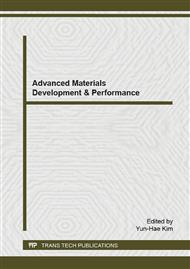p.92
p.96
p.100
p.107
p.113
p.118
p.125
p.130
p.136
A Study on Laser Weldability of Al-Si Coated Boron Steel According to Hot-Stamping Heat Treatment
Abstract:
Numerous studies recently have been conducted to reduce the weight of finished products and increase their fuel efficiency by using hot-stamping processes in the transport industry. Hot-stamping is a method where boron steel is formed and cooled in a press die directly after it is heated to a temperature of 900 °C or higher to obtain a material with a high-strength of 1,500 MPa or more. It is advantageous in that a high level of quality can be ensured because the spring-back phenomenon, a problem associated with high-strength steel materials, can be overcome while the degree of dimensional precision is improved by 90 % or more due to the good formability compared with existing types of steel. In this study, specimens were welded with a laser before and after the hot-stamping process of boron steel, welding characteristics according to heat treatment were elucidated, and mechanical properties were compared. Also, the effect of laser welding on flow from the Al-Si coating layer into the weld was investigated through an analysis of microstructure. The obtained results indicated that, in the case of the boron steel, hardness increased rapidly at the weld. For the hot-stamped steel, there was a sharp reduction of the hardness by tempering in the HAZ. It was found that the Al-Si coating layer flowed into the weld and was segregated when welding was carried out. This resulted in reduced hardness of the weld.
Info:
Periodical:
Pages:
113-117
Citation:
Online since:
June 2015
Authors:
Price:
Сopyright:
© 2015 Trans Tech Publications Ltd. All Rights Reserved
Share:
Citation:


